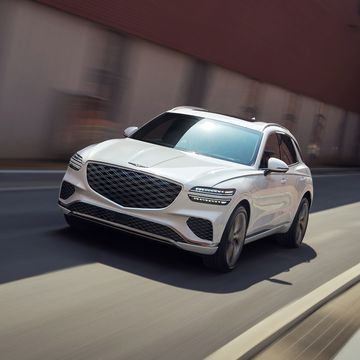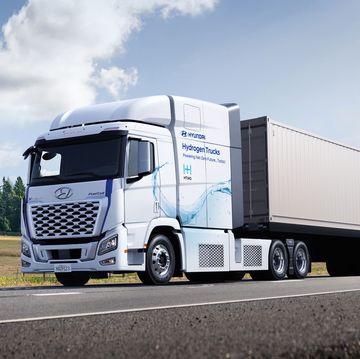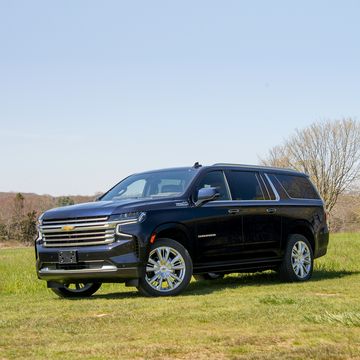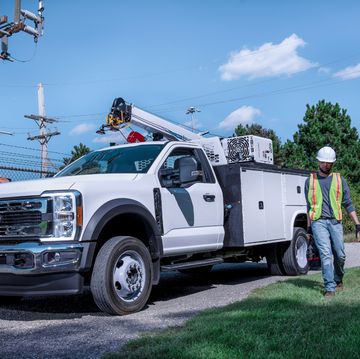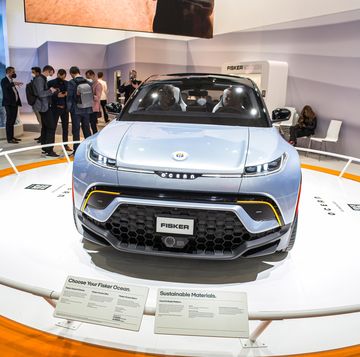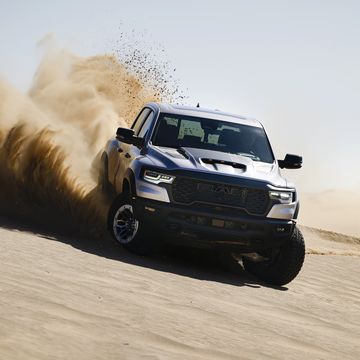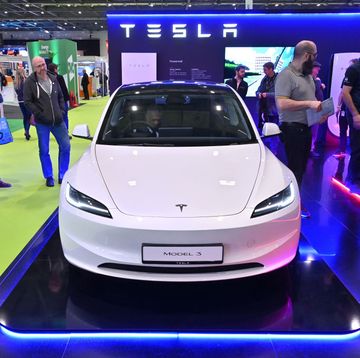- Some 15,000 motorists and first responders are killed or injured each year in roadside crashes, so it’s important to turn on your emergency flashers.
- Houston-based Emergency Safety Solutions wants to double the speed and flashing intensity of federally required hazard lights—from the current 2 Hz to at least 4 Hz.
- Tesla has deployed the ESS technology free as an over-the-air update for some 2 million Models 3, S, X, and Y already on the road, but only in the case of airbag deployments.
It’s something we all dread: a car breaking down or blowing out a tire, perched alongside the road, merely feet from cars and trucks whizzing by at highway speed. Mix in rain and poor visibility, and it might not even be safe to sit in your car, waiting for help.
Some 15,000 motorists and first responders are killed or injured each year in roadside crashes like this.
Yes, you should turn on the flashing hazard lights by pushing the federally mandated button on the dashboard with the red triangle. Before you have an emergency, you should locate that button.
If not clearly visible in the center of the instrument panel, look for it overhead amid the buttons that might be clustered together above the rearview mirror.
For some motorists whizzing by, those four-way emergency flashers might be nothing more than white noise, while others may change lanes to avoid a potential collision, and still others might actually pull over to help out.
As important as those federally required flashers might be, there’s a case to be made for hazard lights that do a better job.
You may have heard of Emergency Safety Solutions, a Houston-based company that wants to double the speed and flashing intensity of these federally required hazard lights—from the current 2 Hz to at least 4 Hz.
The current 2 Hz flash rate has been in use since the federal government first required flashers in 1951, and the technology has barely changed since. ESS was at the recent Chicago Auto Show to push its new technology.
A big enabler for doubling the intensity is the industry’s migration from old-school incandescent bulbs for tail lights and turn signals and replacing them with much brighter LED elements.
Federal officials appear open to these changes to its existing FMVSS 108 standard, but nothing happens quickly when automotive regulations are on the table.
Still, ESS found an ally in Tesla CEO Elon Musk, whose company announced in October 2022 that it would deploy the ESS technology free as an over-the-air update for its Models 3, S, X, and Y already on the road.
That upload occurred this past October, now affecting nearly 2 million Teslas (sorry, Cybertruck is excluded for now).
But few Tesla owners know about this change. That’s because they won’t notice anything different when turning on their hazard lights—they still flash at the standard rate of 2 Hz.
For now, the only time a Tesla’s hazards will flash with new intensity is when an airbag deploys. The National Highway Traffic Safety Administration approved this action in January 2021.
The next step that ESS is hoping Tesla—and all automakers—will take is to update vehicle software so the high-intensity 4 Hz flashing occurs when a motorist turns on the hazards. So far, Tesla hasn’t said when—or if—that will occur.
But beyond Tesla, Volkswagen and Stellantis have been testing the ESS technology, particularly with regard to connected vehicles and the ability to transmit emergency signals to each other or a broader network.
Have you had a harrowing experience on the side of the road? Please share in the comments below.
Tom joined Autoweek in 2022 after nearly 25 years as an editor at WardsAuto, and 10 years as a daily newspaper reporter before that. He’s been in metro Detroit all his life. His personal cars have been downright practical, and he’s happy paying them off and enjoying several years of debt-free motoring. The craziness of COVID drove him to buy a 1953 Packard Patrician, in honor of his grandfather, who worked at the Packard plant until production ceased in the mid-1950s.

